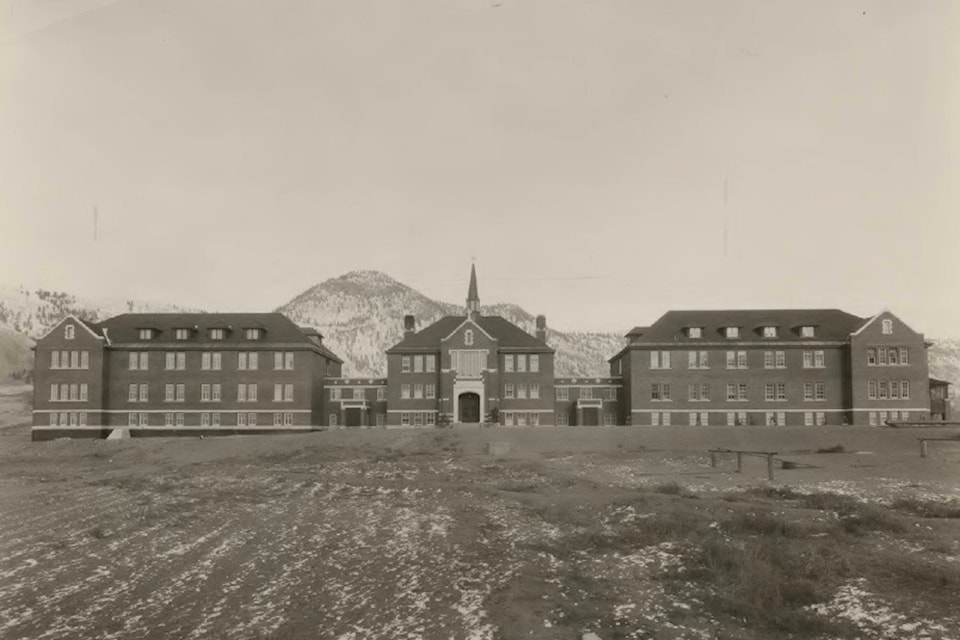The Tk���߲��о����emlups te Secwépemc First Nation has confirmed that the remains of 215 children who were students of the Kamloops Indian Residential School have been found on the reserve using ground-penetrating radar.
In a release, Chief Rosanne Casimir calls the discovery an ���߲��о����unthinkable loss that was spoken about, but never documented by the Kamloops Indian Residential School,���߲��о���� which was the largest school in the country���߲��о����s Indian Affairs residential school system.
���߲��о����We had a knowing in our community that we were able to verify. To our knowledge, these missing children are undocumented deaths,���߲��о���� Casimir said. ���߲��о����Some were as young as three years old. We sought out a way to confirm that knowing out of deepest respect and love for those lost children and their families, understanding that Tk���߲��о����emlúps te Secwépemc is the final resting place of these children.���߲��о����
This work was undertaken by the Tk���߲��о����emlúps te Secwépemc Language and Culture Department, with ceremonial Knowledge Keepers who ensured that the work was conducted respectfully in light of the serious nature of the investigation with cultural protocols being upheld.
Casimir said that, given that the children are buried within the Tk���߲��о����emlúps te Secwépemc community, and with all community members still grappling with the effects of residential school, chief and council first reached out to their community members to make them aware of the situation, contact that continues.
Casimir said Tk���߲��о����emlúps will continue to work with the ground-penetrating radar specialist to complete the survey of the former Kamloops Indian Residential School grounds, which are at the corner of Highway 5 and Shuswap Road.
Preliminary work in confirming that the remains of the children were on the reserve began in the early 2000s, Casimir said, with the radar technology confirming the stories.
���߲��о����We are thankful for the Pathway to Healing grant we received to undertake this important work,���߲��о���� Casimir said. ���߲��о����Given the size of the school, with up to 500 students registered and attending at any one time, we understand that this confirmed loss affects First Nations communities across British Columbia and beyond. We wish to ensure that our community members, as well as all home communities for the children who attended are duly informed. This is the beginning, but given the nature of this news, we felt it important to share immediately. At this time, we have more questions than answers. We look forward to providing updates as they become available.���߲��о����
Read more:
Read more:
Tk���߲��о����emlups is now in communication with the BC Coroners Service, reaching out to the home communities who had children who attended the Kamloops Indian Residential School and taking measures to ensure the locations of the remains are protected. In addition, the Secwépemc Museum Archivist is working with the Royal British Columbia Museum, amongst others, to seek out any existing records of the deaths.
Tk���߲��о����emlups���߲��о���� Heritage Park is closed to the public and no one will be permitted on site for the duration of the work. The band is expected to complete preliminary findings by mid- June and will be providing updates as they become available.
The Truth and Reconciliation Commission (TRC) noted that large numbers of Indigenous children who were sent to residential schools never returned to their home communities. Some children ran away and others died at the schools. The students who did not return have come to be known as the Missing Children. Tdocuments the deaths and the burial places of children who died while attending the schools. To date, more than 4,100 children who died while attending a residential school have been identified.
The Kamloops Industrial School (later known as the Kamloops Indian Residential School) was opened, under Roman Catholic administration, in 1890. It was part of the Canadian residential school system, established as part of the government policy of forced assimilation that resulted in the oppression of generations of Indigenous children. It was one of more than 130 such schools that operated in Canada between 1874 and 1996.
Located on the traditional territory of the Secwépemc people, hundreds of Secwépemc and other First Nations children attended the Kamloops school. Students were sent there from as far away as Penticton, Hope, Mount Currie, Lillooet and even outside the province. Enrolment peaked in the early 1950s at 500. Children were forcibly removed from their homes once attendance became mandatory by law in the 1920s, with their parents under threat of prison if they refused. Students lived at the school from September to June, alienated from their family except for Christmas and Easter visits.
It became the largest school in the Indian Affairs residential school system. In 1969, the federal government took over the administration of the school, which no longer provided any classes and operated it as residence for students attending local day schools until 1978, when the residence was closed.
Home communities of students
Neskainlith, North Thompson, Kamloops, Pavilion, Penticton, Adam���߲��о����s Lake, Bonaparte, Fountain, Douglas L., Okanagan, Quilchena, Shulus, Little Shuswap, Coldwater, L. Nicola, Bridge R. Enderby, Deadman���߲��о����s Cr., Hope, Leon���߲��о����s C., Cayoose, Salmon R., Canoe C., Lillooet, Mount Currie (Lilwat Nation), D���߲��о����Arcy (Nquatqua), Seabird Island, Skwah, Kamloops, Union Bar, Head of L., Deroche, Spuzzum, Shalalth, Spalumcheen.
*Note:Tk���߲��о����emlups said it is its understanding there were children that came from other communities not listed here.
Like us on and follow us on



